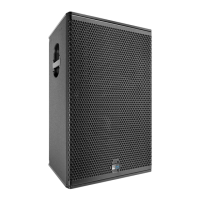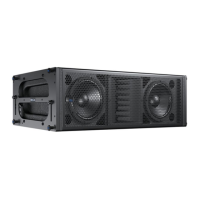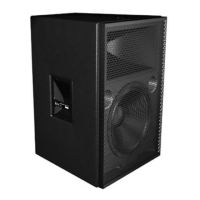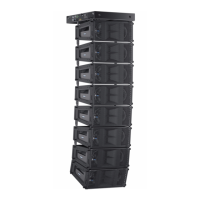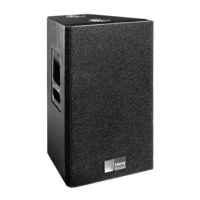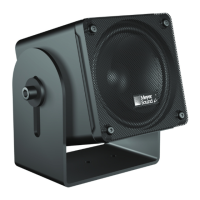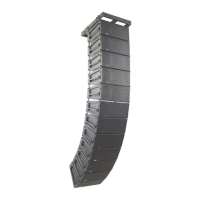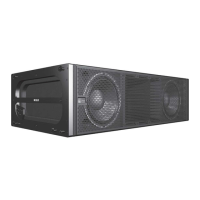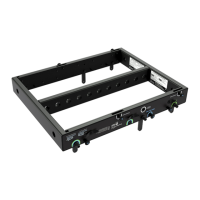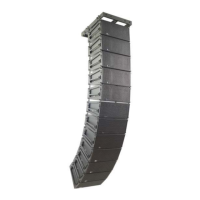11
Phase poppers are, therefore, not useful for performing
phase measurements on an individual loudspeaker or a
full-range sound system containing one or more cross-
overs. If necessary, apply a phase popper only to loud-
speakers with identical drivers without a crossover, and
check the system’s overall phase response with a
frequency analyzer and/or listening test.
NOTE: Since polarity reversal causes excessive driver
excursion at high source levels, use moderate levels for
these tests.
Driver Polarity in the Same Loudspeaker
Use the following test procedure to verify polarity
between drivers in the same loudspeaker:
1. Place a measurement microphone 3 ft from the
front of the loudspeaker at the midway point
between the two drivers.
2. Connect a signal source to the loudspeaker and
note the frequency response.
Drivers with correct
polarity cause acoustic
addition
Drivers with reverse
polarity cause acoustic
cancellation
Top driver is 180
°
out of phase
The polarity is correct if the frequency response is ±4 dB
50–160 Hz. Cancellation greater than 6 dB in the same
range indicates polarity reversal.
Polarity Between Adjacent Loudspeakers
Use the following test procedure to verify the polarity
between adjacent loudspeakers of the same type:
1. Position two loudspeakers adjacent to each other.
2. Place a measurement microphone 3 ft from the
speakers on the axis between them.
3. Connect a signal source to one speaker and note the
frequency response and overall level.
4. Apply the same signal to the second speaker with
the first speaker still connected.
The polarity is correct if the frequency response remains
constant with a significant increase in amplitude. Broad-
band cancellation (decreased overall level) indicates
polarity reversal.
NOTE: Do not attempt to check more than two adjacent
speakers in one test. Detecting polarity reversal among
more than two speakers is difficult and may damage
the drivers in the cabinet with reversed polarity.
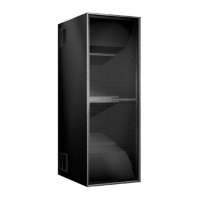
